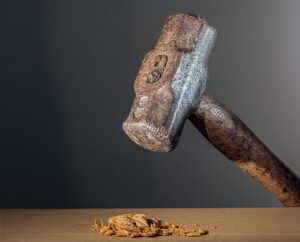Dvar Torah for Purim
Based on Rebbe Nachman’s Wisdom #3
On Purim a man is obligated to get so drunk that he does not know the difference between “cursed is Haman” and “blessed is Mordekhai” (Shulchan Arukh, Orach Chaim 695:2). (Other halakhic opinions allow one to get only mildly inebriated.)
Too often, we get so caught up in making sure we do a mitzvah (properly) that we forget to reflect about what it can teach us. (Sometimes, though, it’s enough that we remember to do it!) This is particularly true of getting drunk on Purim. What’s to think about? Just pass the bottle!
Well, there’s a difference between an ordinary no-brainer and a Purim no-brainer. The Chovavat HaLevavot (among others) writes, “The goal of knowledge is to realize that one knows nothing.” Reb Noson writes:
It cannot be put into writing how much the Rebbe emphasized God’s greatness. He stated that it is beyond all measure. So many magnificent and spectacular things take place in the world—so much so, that people truly know nothing at all.
This is true on a large scale, as per Megilat Esther, and in our own personal lives. We have no idea why we were born where we were, when we were or as we were. But here we are, as we are, like it or not. And when Haman casts his specter over us, when he says he will have us killed—physically—and annihilated—spiritually—we believe it. Haman says our Judaism is dead and gone. It gnaws at us; we have a sinking feeling he may be right. The cancer of doom metastasizes in our hearts and minds.
We believe him because we know he’s right. “I did this sin and that, I haven’t been doing all the mitzvot I know I should, etc., etc.” At this point we need to draw on Rebbe Nachman’s un-knowing. The Rebbe explicitly said though his teachings were very unique, his not-knowing was even more unique. That is, he was unique in acknowledging his ultimate un-knowing (Rebbe Nachman’s Praise, The Pilgrimage #33).
On one such “un-knowing” occasion (Rebbe Nachman’s Wisdom, #153) the Rebbe made his famous declaration: There is no such thing as despair! That was one of the many times the Rebbe emphasized the power of repentance, of starting again. And now, in our day and age, beginnings don’t have to wait for Pesach. Now, beginning starts on Purim (Likutey Moharan II, Lesson #74).
So getting drunk until one doesn’t know, is exactly what we need. As the Maharal of Prague put it, we need to get drunk in order to realize that, ultimately, left to our own devices, we are truly helpless, destined to come an end just like everything else in creation, just as the year ends in Adar. But it’s not enough to know it. You have to not-know it, first-hand. L’chaim!
afreilekhen Purim!
Purim sameach!
Merry PURim!
Ozer Bergman
Breslov Research Institute
© Copyright 2009 Breslov Research Institute
- 0 comment




















